Copyright 2020 - 2021 irantour.tours all right reserved
Designed by Behsazanhost
Urmia, the City of the first Assyrian Churches in Iran
Urmia, the City of the first Assyrian Churches in Iran
If you are going to visit the west of Iran, and like to surprise yourself with the most beautiful natural features, the first Assyrian churches in Iran, old historical monuments, and a unique mix of Kurdish, and Turkish Iranian culture, this is the best choice. Urmia is the largest city in the West Azerbaijan Province of Iran which is situated at an altitude of 1,330 meters (4,360 ft.) above sea level and is located along the Shahr Chay River (City River) on the Urmia Plain. Lake Urmia, one of the world's largest salt lakes, lies to the east of the city, and the mountainous border area with Turkey lies to the west.
In Assyrian language "ur" means "city" like in the word "Jerusalem", "city of peace" and "mia" like "ma" in Arabic means "water", hence "the city of water". The topography and special vegetation cover of this region, along with the presence of Lake Urmia has made this region a unique place. The city is the trading center for a fertile agricultural region where fruits (especially apples and grapes) and tobacco are grown.
Urmia is the capital city of West Azerbaijan Province. An important 9th-century city that was seized by the Seljuk Turks (1184). Later on, it was occupied several times by Ottoman Turks. The first U.S. Christian mission in Iran was sent to Urmia in 1835. Around AD 1900 the Christians formed about 40% of the city's population, many Christians fled in 1918 as a result of the massacre of Assyrians and Armenians by the Ottoman Turks. Urmia is one of the ancient cities in Iran with Assyrian origin. Some historians claim that Urmia was the birthplace of Prophet Zoroaster.
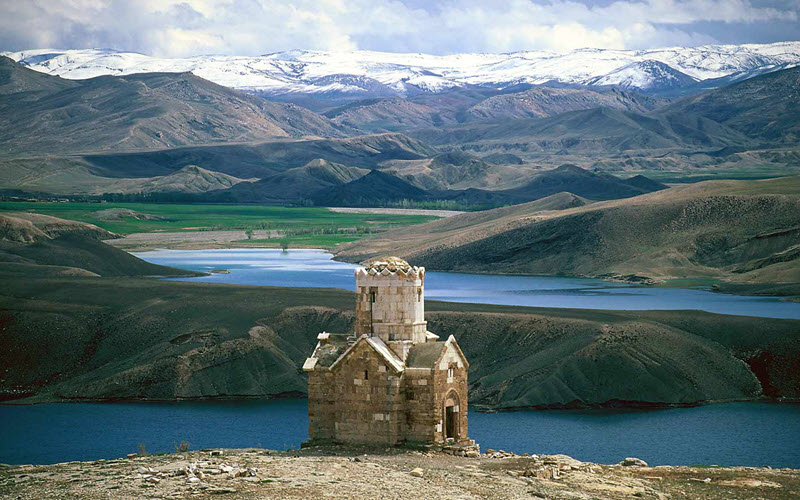 |
All About West Azerbaijan Province
The West Azerbaijan Province borders Turkey, Iraq, and Nakhjavan. The tall mountains and the influence of the rainy winds of the Atlantic Ocean and the Mediterranean Sea cause to have cold northern winds and heavy snow. Thus this area has vast green plains, dense forests, and different rivers and is changed into one of the best destinations for nature lovers. The various mineral springs in West Azerbaijan consist of Istisoo Mineral Spring near Salmas, Mahal Barandooz Hot Spring near Urmia, Kuh Zanbil Mineral Spring near Lake Urumia, and other mineral springs. This region has been the focus of writers - poets, and historians. Most of the local traditions such as folk music, dance, and traditional events are still preserved.
History
The excavations conducted at Tappeh Hassnalu (EN: Hassanlu Hill) have confirmed human settlements in Azerbaijan as from Sixth Millennium BC onward. In Tappeh Hassanlu, a famous Golden Grail was found in 1958. The Province is housing Tappeh Haji Firuz where archaeologists have discovered the world's earliest evidence of wine production. Gooy Tappeh is another significant site where a metal plaque dating back to 800 BC depicts a scene from the epic of Gilgamesh.
Ruins such as these and the Sassanid compound of Takht-e-Soleiman illustrate the strategic importance and tumultuous history of the Province through the millennia. Overall, the province enjoys a wealth of historical attractions, with 169 sites registered by the Cultural Heritage Organization of Iran. The most ancient civilization in the region was that of Mannaeans, a buffer state between the Urartian and Assyrian spheres of influence. In the 4th century AD Sassanians annexed the area to the neighboring Adhurpadaghan Satrapy to the east. The name Adhurpatagan, later Arabicized to Azerbaijan, derives from Atropates, an Iranian satrap of Media under the Achaemenid Empire.
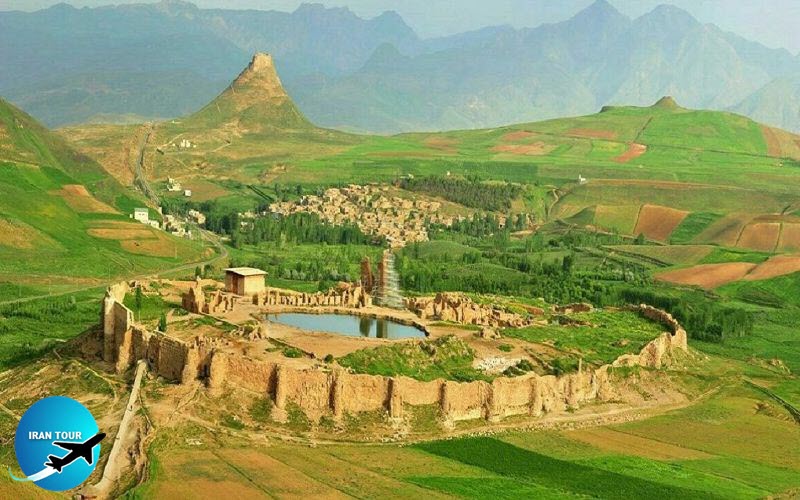 |
The most important cities to visit
Khoy
Bostam Castle located near Bostam is an Urartu monument (7th century BC) is protected by solid parapets and a stone gate. It contains a pillared hall, administrative Divisions, the king's palace, and the temple of the god Kaldi or Chaldi. Other monuments in Khoy consist of Shams Tabrizi Tower, Matlabkhan Seminary, Khoy Bazaar, Gate, etc.
Mahabad
The city has historical attractions such as Faqrgah or Fakhrika Dungeon Cemetery which is believed to date back to Median or Achaemenid periods. The double-story cemetery contains two halls, four pillars, and several graves. Other monuments consist of Mahabad Congregation Mosque, Bodaghsoltan Grave, Andar Qash Median town, Rakad Cave, and other ancient monuments. Natural attractions like Faqra Cave, Booring Cave, Sahoolan Cave, and Geradoo Spring are to be mentioned. Kaniborazan Wetland is a well-known site for birdwatchers.
Takab
Takab has one of the most important worlds heritage-registered historical complexes in Iran, called Takht- e-Soleiman. World Heritage, Takht-e Soleyman (EN: Solomon's Throne), 45 km northeast of Takab, contains three important Sassanid fire temples. After the Islamic Conquest, the temples were named Takht-e Soleyman to stop Muslims from destroying them. The ruins of the ancient fire temples, stone parapets, 4 gates, 84 defensive towers, Sassanid palaces, and homes of Mubids and temple attendants can be traced in this area. Other monuments in the town consist of Ayoob-e Ansari Castle, Soleiman Jail, and Belqis's Throne. Natural attractions consist of Kahriz Cave, Chamali Laki, and Chahzendan Cave.
Maku
Qara Kelissa (EN: the Black Monastery) at Chaldoran village south of Maku was the tomb of St. Tadeos, one of the apostles of Jesus Christ, which was later converted to a monastery. The church is remarkable for its fine engravings and use of black and white stones. Baghcheh Jooq Palace is a double-story Qajar palace built by Eqbalolstaltaneh Makuyi which was repaired by his son at a later date. It is a mixture of Persian and Russian architecture. Other historical attractions in Maku consist of Panj Cheshmeh Bridge, Qale Jooq Bridge, Farhad's Dungeon Graveyard, a bath, several aristocratic houses, Maku Museum, Aghgol Protected Zone, and several castles. Natural attractions in Maku consist of Khezerloo Cave, several mineral springs, Qaleh Jooq Waterfall, two hunting grounds, and Chaldoran Plain.
Miandoab
This city has historical and natural attractions like Qale Bakhtak Castle, Mirza Rasool Bridge, Holaku Khan's Castle, Bardook Castle, Zarinehrud River, and Dash Tappeh.
Naqadeh
The most remarkable historical site in Naghadeh is Tappeh Hassanlu which is located southwest of Urmia Lake, 10 km north of Naqadeh. The oldest layers of Hassanlu Tappeh date back to 6000 years BC. The most important objects discovered in this Tappeh are related to the First Millennium BC including Hassanlu Golden Grail. Other monuments in Naqadeh consist of Mohammad Uraz Tomb, Meymand Bridge, Meymand Village, and Haji Firooz Tappeh.
Salmas
Haftvan Church, Sheikh Salmas Bath, Khosrowabad Cathedral, Salmas Hadar or Salmas Dungeon Grave, St. George Church, and Goovarchin Castle are the historical attractions to be mentioned and Natural attractions consist of Qarni Mountain underground caves, Minas Mineral Spring, Istisoo Waterfall, and Jamalabad Dam.
Sardasht
Qalatasyan Bridge and Musasir Rabat Historical Town are some of the historical attractions of the city and Natural attractions consist of Shalmash Waterfall, Geravan and Sadaqian springs, Zab Khochak River, Qelatasiyan Cave, woods and jungles.
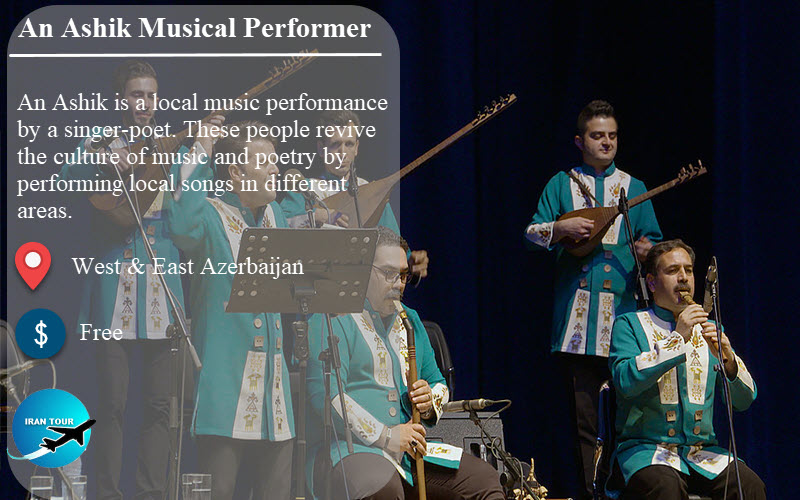 |
All about the history of Urmia
This old city with more than 3000 years old history is one of the best top 20 historical cities in Iran.
Some of its historical monuments are among the best ones in Iran(like Assyrian Church & Jame Mosque) and are inscribed on UNESCO World Heritage List (Takht e Soleyman in Takab).
So it has changed into one of the best Iran destinations for natural & historical tours.
Some Historians believe that the first foundation of this city backs to the 2nd millennium BC and is as old as the Sardis and Nineveh cities.
Some of the historical objects discovered in this city belong to the end of the second millennium BC and the beginning of the first century BC and prove that here was one of the cities of the ancient Urartu Kingdom.
This city has been one of the important centers of agriculture and grape (wine) production since the beginning of Islam and happened various wars for the capture of this region in different historical periods.
The good location of this city on the great transit road between the Caucasus, the Middle East, and Asia Minor, changed it into one of the business centers of the region in the past thus has experienced many historical events such as occupation by the Ottomans and the Russians or even the conquered by the Ottoman government in the 18th century.
After the first war and during the Pahlavi era, the situation of the city began to recover gradually and after the 1979 Islamic Revolution, the name returned to Urmia.
6 reasons to travel to Urmia:
- Lake Urmia, is the biggest salty lake in the middle east and the second one in the world.
- A three-thousand-year-old city
- Various attractions like the first Assyrian churches in Iran and other historical churches ( some of which have been registered as UNESCO world heritage, like St. Mary Church).
- Numerous souvenirs: Noghl and Walnut jam
- So many ancient hills.
- The most important center of Grape fields and evidence of the first wine company.
- Caving in Sahvalan Water Cave
What to See in Urmia
Urmia Historic Bazaar
The historical bazaar of Urmia is one of the rare monuments remaining from the Safavid dynasty in Urmia. The simple architecture is its significant property while it has various types of arches and domes. The ancient bathhouse of the bazaar dates back to Qajar and Zand periods. The entrance is one of the most beautiful ancient Iranian architecture.
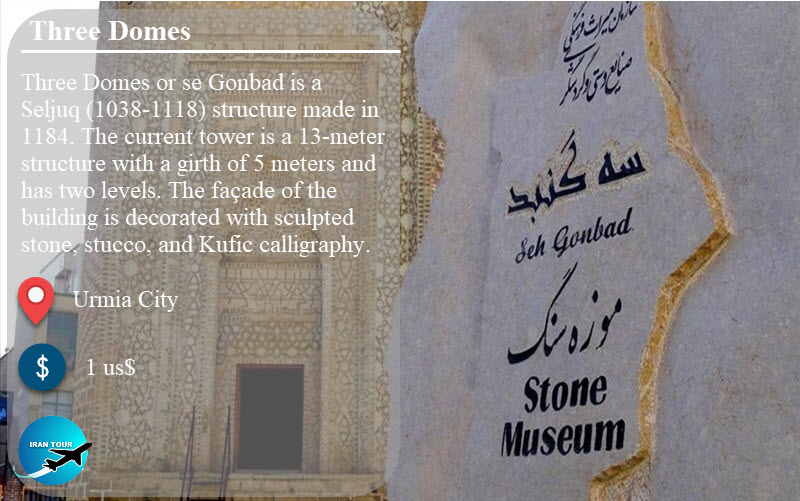 |
Three Domes (Se Gonabad)
Se gonbad or Stone Museum
Se Gonbad Islamic tomb tower is a cylindrical form made with stone and brick on two floors. The first floor is the basement and the tomb room is on the floor. Input framing a group of stones and its body is decorative brickwork. Ac- cording to the Inscription on the Forehead the trance founder is Amir-Shishghat-Mozafari from local Seljuk commanders and architect- Ibn Mousses and the construction year is 580 AH.
Nine Steps (Doquz Pelleh) Ice House
Doquz Pelleh Ice House is situated by a little spring called "Darreh Chay" in an old district of Urmia called "Asgar Khan". Doquz means 9 in the Turkic language. The ice house was regularly harvested by the people of Urmia before the city expanded to its present shape. Also, the Chaharshanbe Suri festivity used to be held beside the little pool some 40 meters away from the spot where the spring water flows into the ice house.
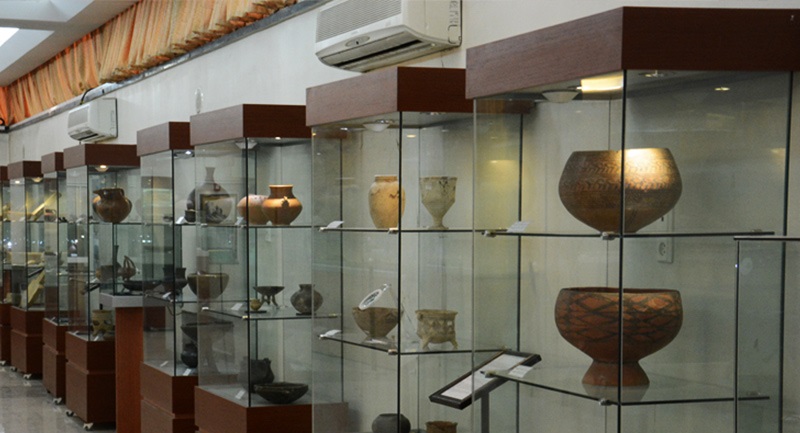 |
Urmia Museum
One of the largest troves of historical treasures, the Urmia Museum was opened in 1967 to house artifacts from various historical eras. The museum displays over 26 thousand ancient artifacts from the 7th millennium BC to the Qajar era (1785-1925). The museum has three priceless Urartian cuneiform tablets from the 1st millennium BC known as the Kelishin Stele, the Mavana Stele and the Mahmoud Abad Inscription. The museum has dedicated a hall to items with anthropological significance and also showcases handwritten Qurans, religious manuscripts, as well as the handicrafts and traditional arts of the city.
Grand Mosque
The Grand (Jame') Mosque is considered an architectural masterpiece dating back to hundreds of years ago. Situated in the old part of the city, the Grand Mosque of Urmia was constructed in the 13th century.
Sardar Mosque
This mosque was constructed in the Qajar era by Abdo Samad Khan, the forefather of Azim-Al-Saltaneh Sarda He installed a big clock on its entrance gate. That's why it has been well known as Sa'atlu Mosque because in the Persian language, Sa'at means clock. The mosque includes two separate parts.
The dome of Sardar Mosque is installed on twelve octagon stone columns. The upper parts of the column are designed with excellent handy carvings. The small hall is located exactly at the end of the main hall which is linked by a gate.
Marmisho Lake
Marmisho Region is located 70 Km northwest of Urmia in a long valley with 184) Km2 area. Known as a lost paradise, everyone is amazed by staggeringly beautiful landscapes including stunning Lake in the heart of Marmisho Mountain.
Christian Churches
Due to the presence of old churches in this city, it is also known as the city of churches. The most important old church in this city is the St. Mary Church.
The most important Churches are:
St. Mary Church
St. Mary Church is an ancient Assyrian church. considered by some historians to be the second o church in Christendom after the Church of the Nativ Bethlehem in the West Bank.
The current old building of the church belongs to the Sasanid era and its interior design is a combination of Sas and Arsacid architecture. It is believed by some Ass' and Christian historians that it had been a fire temp first in which Zoroastrian priests used to pray. At J Christ's time of birth, three Persian priests observed a shining star moving toward the east. They considered it a sign of awaited Messiah's birth and traveled to Jerus to meet him. After coming back they changed the temple to a church.
Mar Sarkis Church
The Mar Sarkis Church is one of the stone structures of the province. The roof and all walls are skillfully and solidly built with stones of irregular shapes. This church is on the slopes of the mountains 12 km. west of Urmia. This church was built under the orders of Shirin (the wife of the Sassanid ruler Khosrow Parviz), who was a Christian follower.
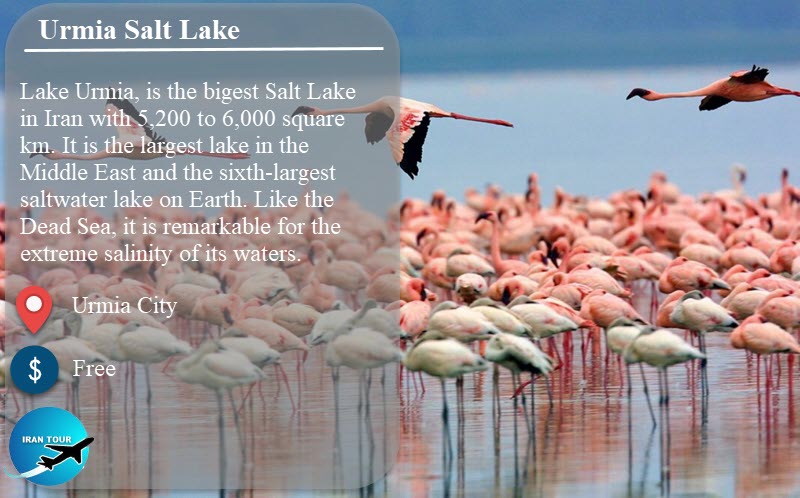 |
LAKE URMIA
Lake Urmia is a salt lake between East Azerbaijan and West Azerbaijan. It is the third largest saltwater lake on earth covering approximately an area of 5,200 km2 (2,000 mile2) with 140 km length, 55 km width, and 16 m depth. Lake Urmia is protected by the Iranian Environment Protection Agency, facing drought.
The lake is divided into north and south by a causeway in which a 1500m gap provides little exchange of water between the two parts. Due to drought and increased demands for agricultural water in the Lake's basin, the salinity of the lake has risen beyond 300 g/l in recent years, and large areas of the lake bed have been desiccated. Lake Urmia possesses 102 islands which are the habitat of Iranian Endemic Yellow Deer and wild Goose, Pelican, Flamingo, and many other migrating birds. Shahi Island, the second largest in Urumia Lake, is the burial place of Hulaku Khan, the grandson of Changiz Khan, who sacked Baghdad. 13 rivers are pouring water into Urmia Lake. Thanks to ample minerals with wonderful curing effects many patients suffering from skin diseases and rheumatism travel to the region and bathe in the salty Urmia Lake.
How to get Urmia from Tehran?
This amazing city is a main tourist destination in the west of Iran, thus you would have different options to get there.
Tehran to Urmia Flight
َA cheap 1.15 min flight from Tehran to Urmia with 22 us$(6.4.2023) is the best safe and fast travel to Urmia city.
Tehran to Urmia Train
A long safe journey (14 to 15 hours) with a Train from Tehran to Urmia for just 3us$ is the best option for economy travelers.
Tehran to Urmia bus Timetable
To have a comfortable and cheap trip through cities in Iran, you can travel by bus. Buses have the benefits of affordable prices, safety, and the pleasure of traveling on the road. Traveling with well-equipped intercity buses from Tehran to Urmia or from other cities will be one of your most common and safest choices. You can choose one of the types of buses(from 2 us$) with various timetables based on your schedule and enjoy the trip.
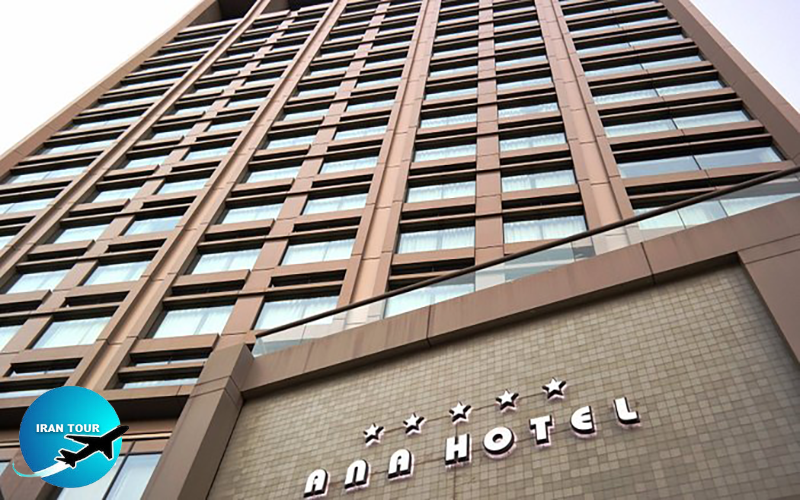 |
Where to stay
This tourist city will provide you with safe and comfortable accommodations with a wide range of economic hotels to 5-star luxury hotels, numerous apartment hotels, and eco-lodges. If you are interested to stay in Urmia our free experienced adviser can do your booking at the lowest possible price.
- Details
- Category: Where to go in IRAN